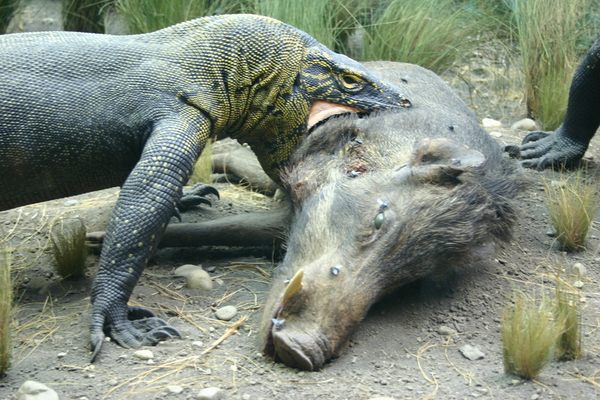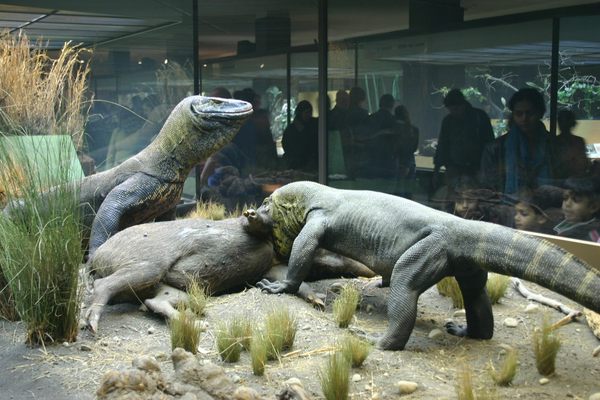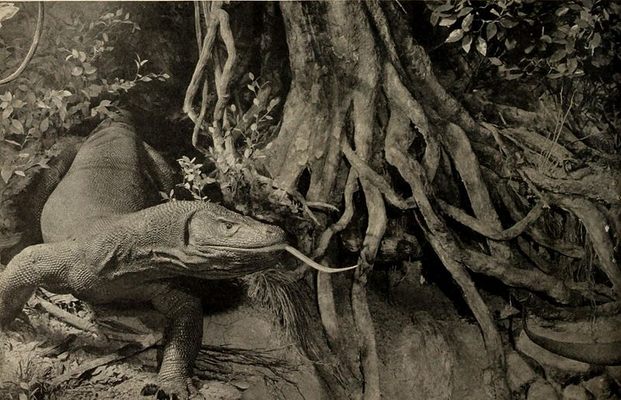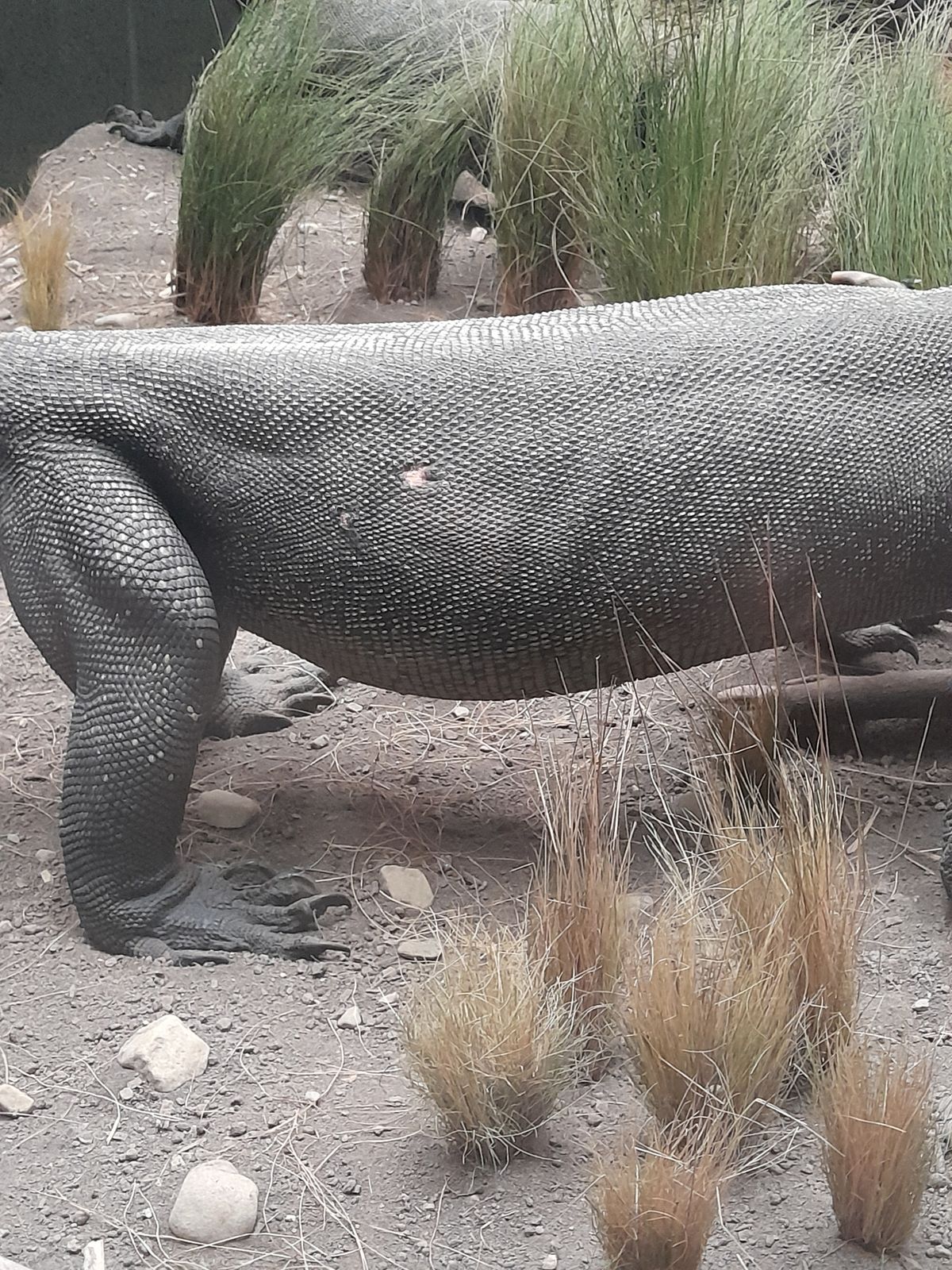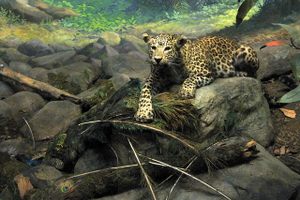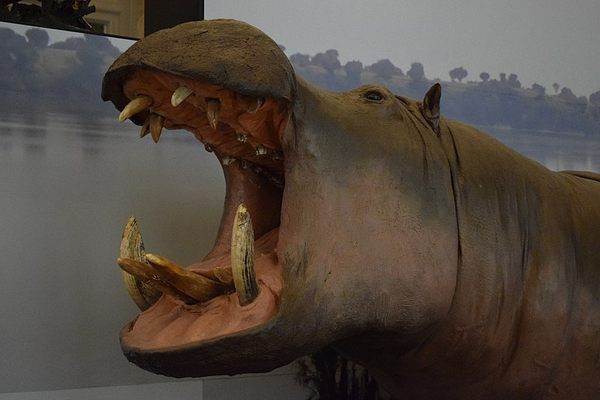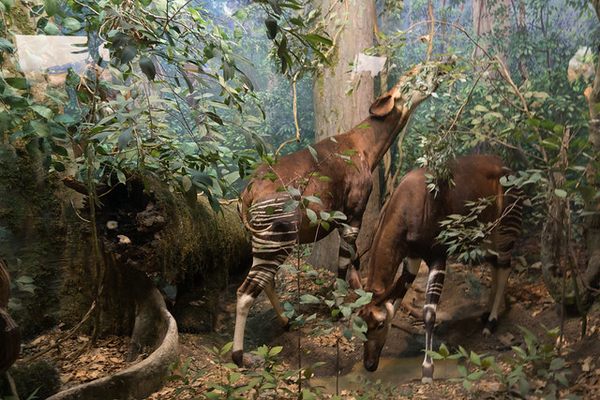About
In one of the labyrinthine halls of the American Museum of Natural History in New York, you'll find an intriguing taxidermy diorama of dragons—Komodo dragons.
In the diorama, a wild boar sow has succumbed to the lethal venomous bite of a Komodo dragon, which has begun to tear into its prey with serrated fangs, chewing through the decaying flesh and muscle. Two other specimens of the gigantic lizards are portrayed bullishly approaching the boar carcass, no doubt with the intent of driving the other dragon from its kill. One of these dragons is lumbering in the background, its forked tongue flickering, searching the air for traces of the scent of rotting flesh. The other is portrayed having moved closer; its throat appears to be inflated in anticipation of devouring these putrified pickings.
Look carefully at the boar carcass, and you will notice the painstaking attention to detail given by the taxidermist. Included are several blowflies shown in the act of crawling over the corpse to lay their eggs, which will hatch into a writhing mass of hungry maggots. Take a further glance at the dead glazed eyes of this hapless hog, and you may see that the artist has even made them reflect the postmortem changes to the prey. The greenish hue of the glass eyes perfectly captures the color of a fading tapetum lucidum of a dead beast's retina.
Given the immediacy and astounding realism of this scene, it may come as a surprise to learn that this particular diorama is approaching 100 years old. Yet the advanced age of the specimens is not the only fascinating thing about this exhibit. There's also the interesting story of how these creatures were collected, their auspicious arrival at the museum, and their impact on popular culture.
Around the turn of the 20th century, much of the world and its fauna had already been documented and "discovered" by explorers and naturalists. Nevertheless, there remained a few isolated areas where expeditions had rarely set foot, and one such place was Komodo in the Sunda region of Indonesia. This island was the subject of persistent rumors of enormous reptiles that resembled dinosaurs, rumors that spread with excitement through the scientific community.
A trickle of skins, bones, and photographs obtained by travelers had reached a number of museums around the world, but entire type specimens of the species and captive individuals for zoos had yet to be obtained. It is therefore unsurprising that when in the 1920s a wealthy young explorer and naturalist, William Douglas Burden, nonchalantly broached the subject of wanting to "catch a dragon" to the president of the museum, he was given the go-ahead for an expedition to bring back accounts of this animals behavior and specimens both live and dead for the collection.
In 1924 the expedition set forth on the 15,000-mile journey by steamboat that would take them to the island, then technically a territory of the "Dutch East Indies" administered by the Dutch colonial government. Soon the expedition was obtaining reels of footage of the dragons by leaving bait of dead deer and boar and filming the creatures from hides as they devoured the remains. Burden was able to collect 12 specimens for the museum and was even able to trap a number of live individuals for the New York zoos.
Upon the triumphant return, the media attention around the arrival of specimens both living and dead made these animals an overnight sensation, and crowds of visitors flocked to the museum and zoo to catch a glimpse of them. Burden's account of his adventure, Dragon Lizards of Komodo, was a commercial hit and a notable influence on Hollywood screenwriter Melvin Cooper. After reading Burden's book, Cooper was inspired to develop a movie called King Kong that would change cinematic history. He based much of the film's plot on Burden's quixotic quest, and pitted the famous giant ape protagonist against reptilian monsters based on the Komodo dragon.
Related Tags
Know Before You Go
The Komodo dragon diorama can be found on the 3rd floor of the museum in the Reptilian and Amphibian gallery. AMNH is open from 10 a.m. to 5:45 p.m. every day. Entrance is free, but it is strongly recommended to contribute a small donation to the museum to help with its upkeep and outstanding scientific work.
If you are interested in this species and would like to see a living dragon in the flesh dont forget to check out the Komodo dragons that are kept nearby in the Bronx Zoo.
Community Contributors
Added By
Published
May 10, 2019

